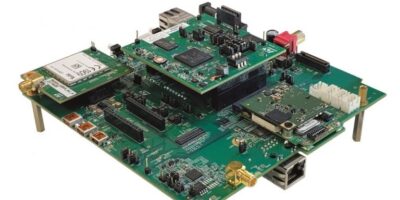Real-time operating system (RTOS) for certifiable embedded systems company, SYSGO has jointly developed the Automotive Secure Gateway, based on STMicroelectronics’ Telemaco3P SoC.
The Telemaco3P SoC is an automotive processor for secure telematics and connectivity, which is combined with SYSGO`s PikeOS hypervisor-based RTOS, which brings avionics-grade safety and security to the automotive market, says the company.
The Telemaco3P platform ensures a secure connection between the vehicle and the cloud. Its asymmetric multi-core architecture is built upon powerful application processors as well as an independent controlled area network (CAN) control sub-system with optimised power management. Its ISO 26262 silicon design, embedded hardware security module and automotive-grade qualification up to +105 degrees C ambient temperature enable it to be used in a range of secure telematics applications supporting high-throughput wireless connectivity and over-the-air (OTA) firmware upgrades.
PikeOS extends the concept of secure telematics by encapsulating all communications channels and all applications in individual partitions, using a positive-security concept. This means that individual partitions cannot communicate with each other unless explicitly allowed and configured by the developer. The strict separation on the kernel level ensures that any malfunction or malicious attack will not impact the software running in partitions other than the one originally affected. PikeOS is currently the only RTOS/hypervisor certified to Common Criteria (EAL 3+). It has been used in a range of critical safety and security applications in the avionics, railway, and automotive industries.
The Automotive Secure Gateway implements a comprehensive security concept including a virtualised firewall, an intrusion detection system (IDS), fast and secure boot capabilities and a secure OTA update process. It supports secure cloud communications via LTE, as well as secured Wi-Fi, Bluetooth, Ethernet and CAN connectivity within the car.
At CES 2020, ST and SYSGO will demonstrate how the Automotive Secure Gateway can detect and effectively mitigate OTA attacks. Demos will take place at CES 2020 in Las Vegas, Nevada, USA, in the Automotive Grade Linux showcase in the Smart City exhibition (Westgate Booth 1815) and in SYSGO’s hospitality suite in the Westgate Hotel (floor 18, suite 1830).






